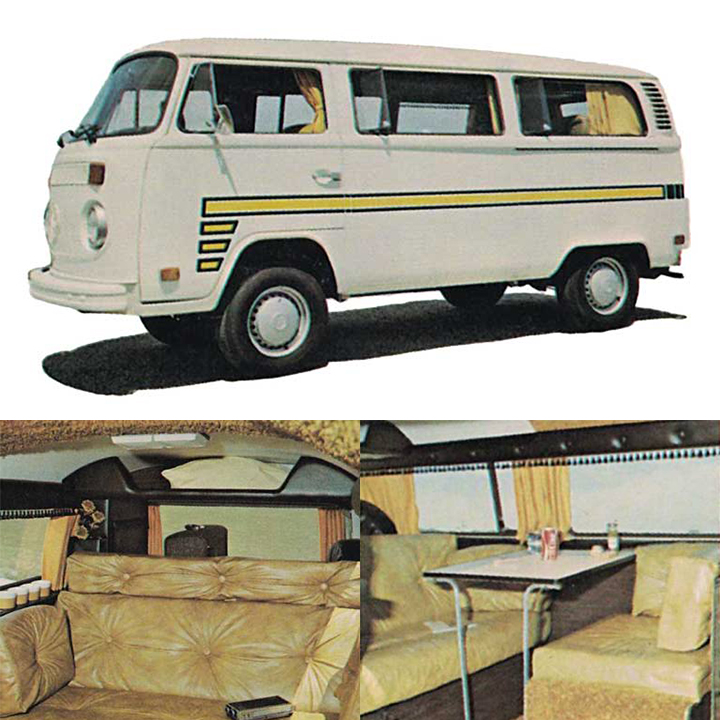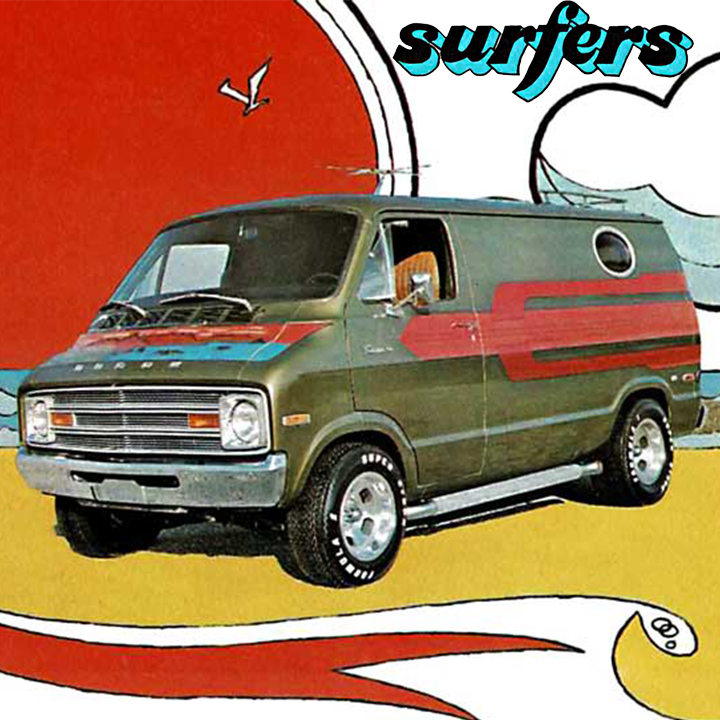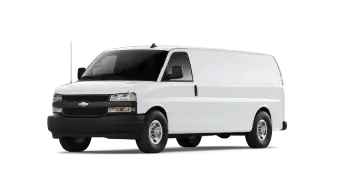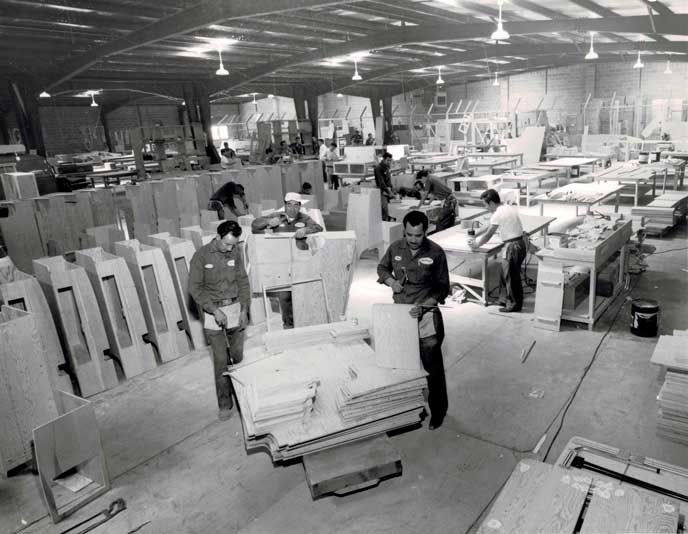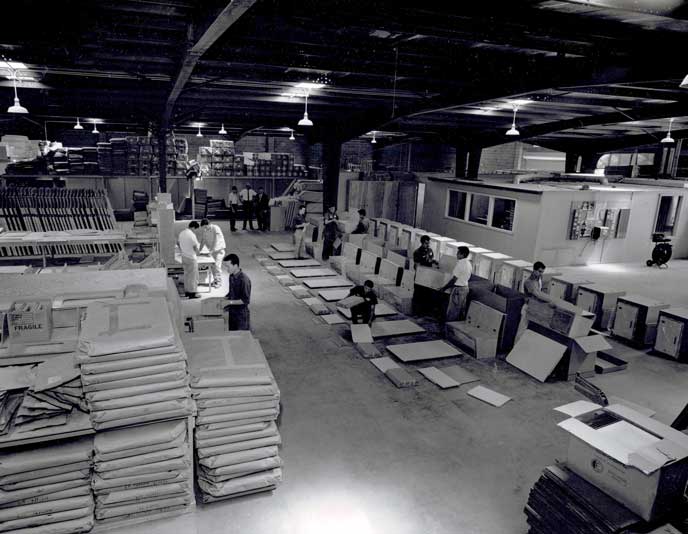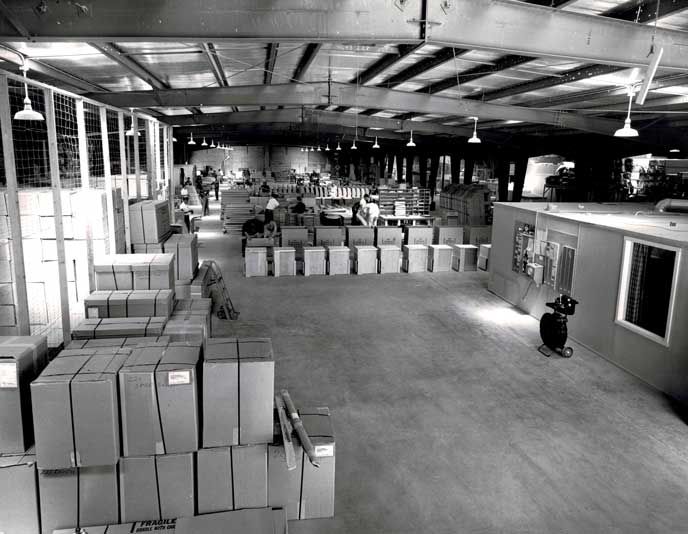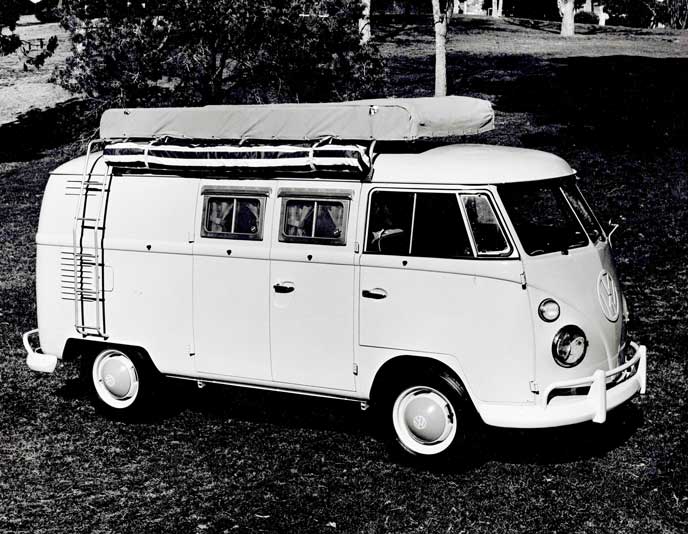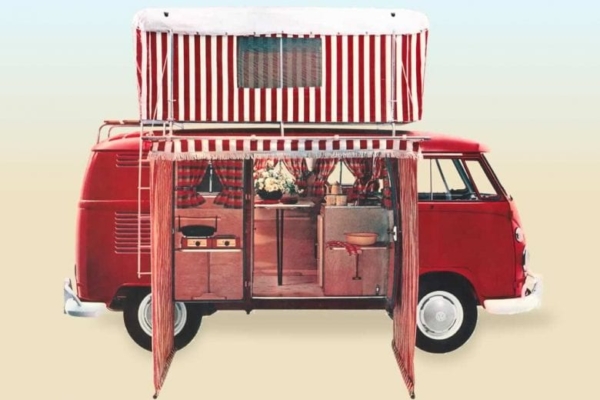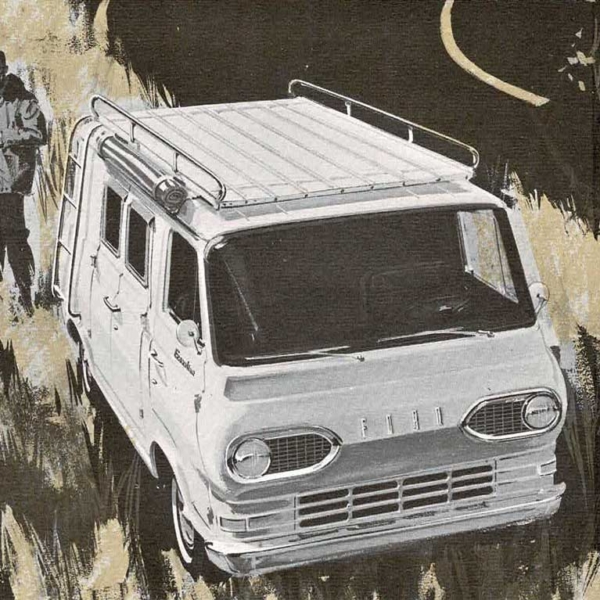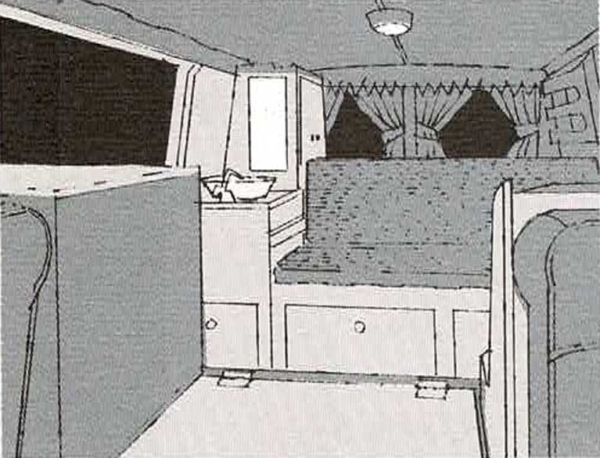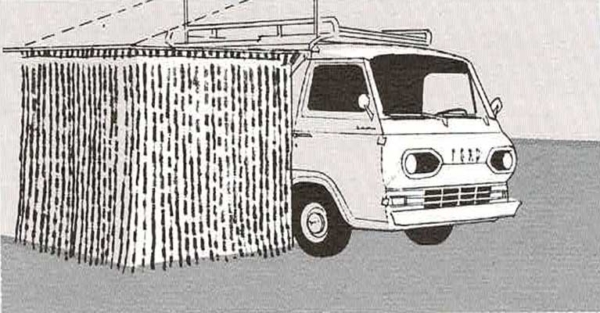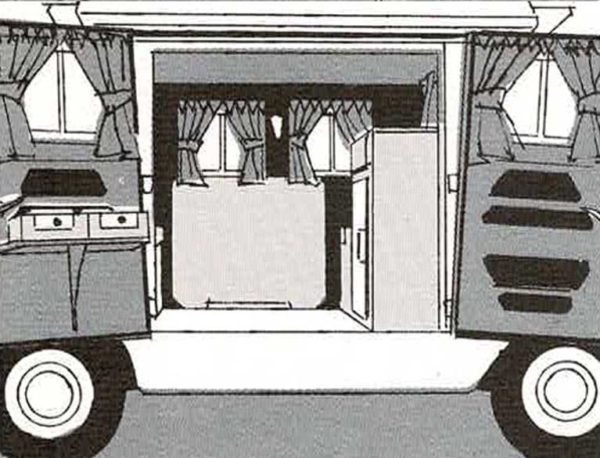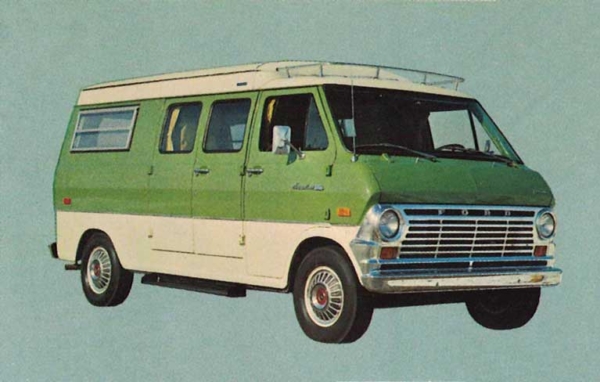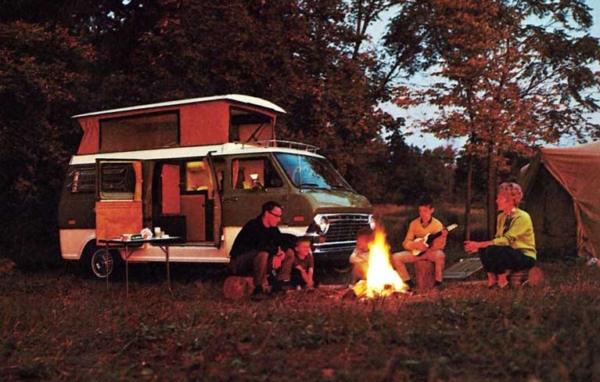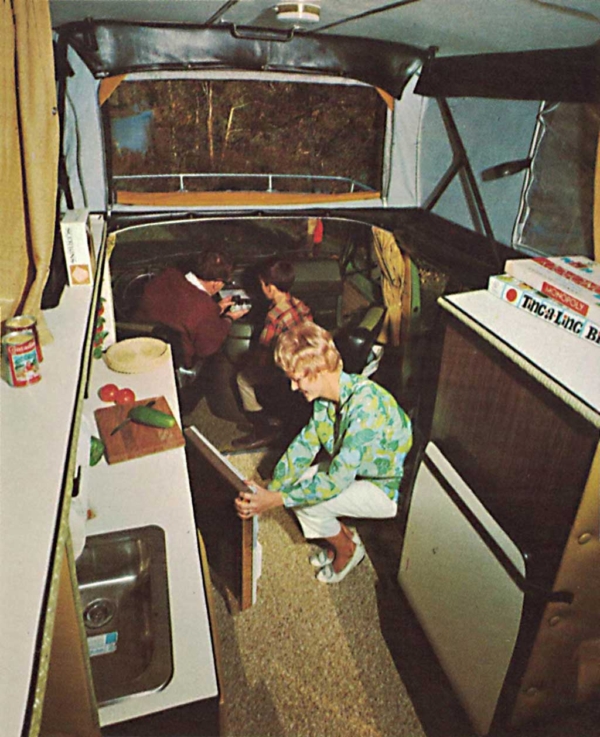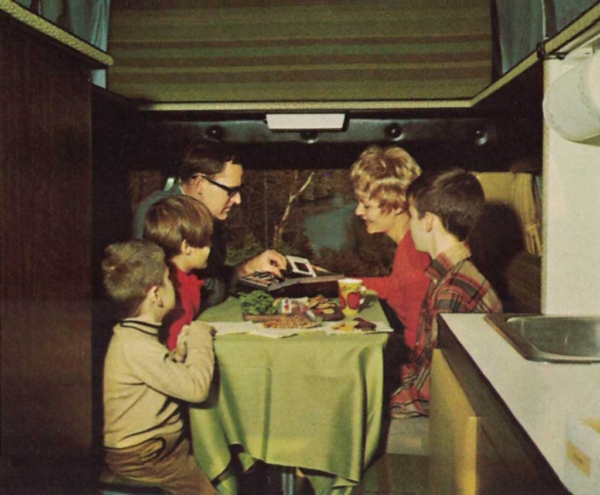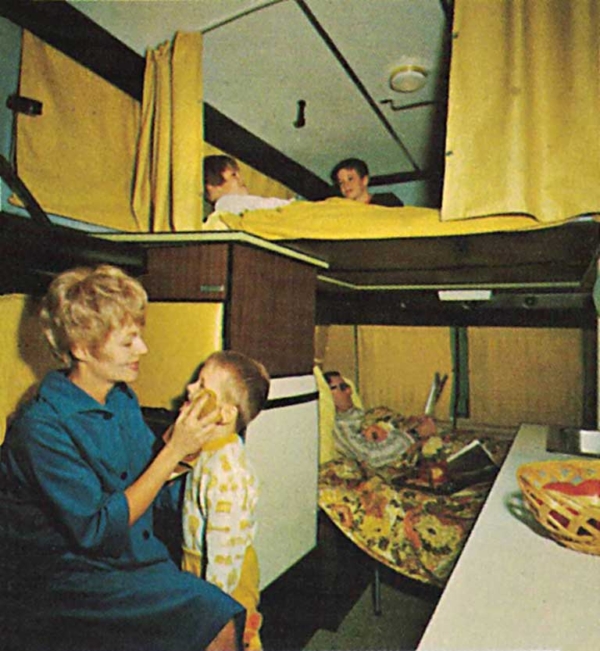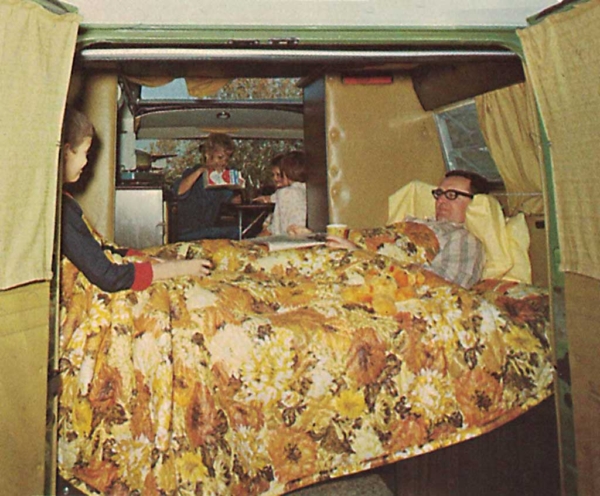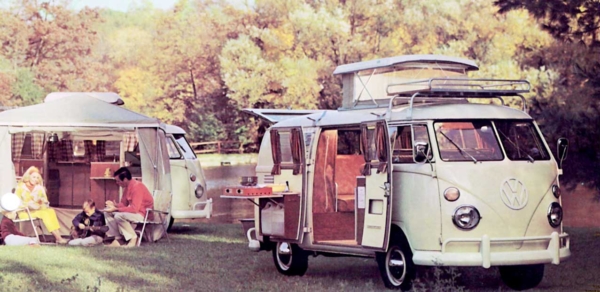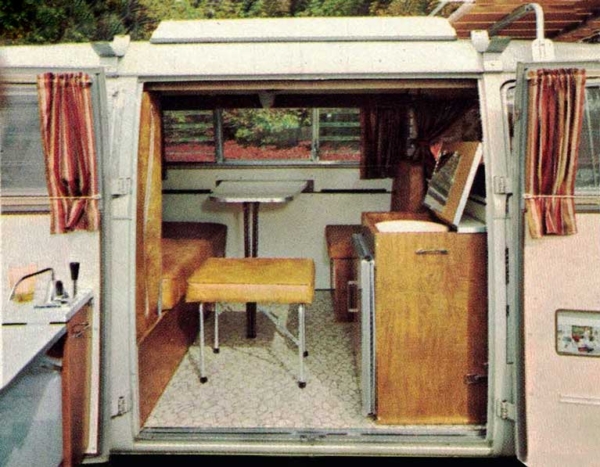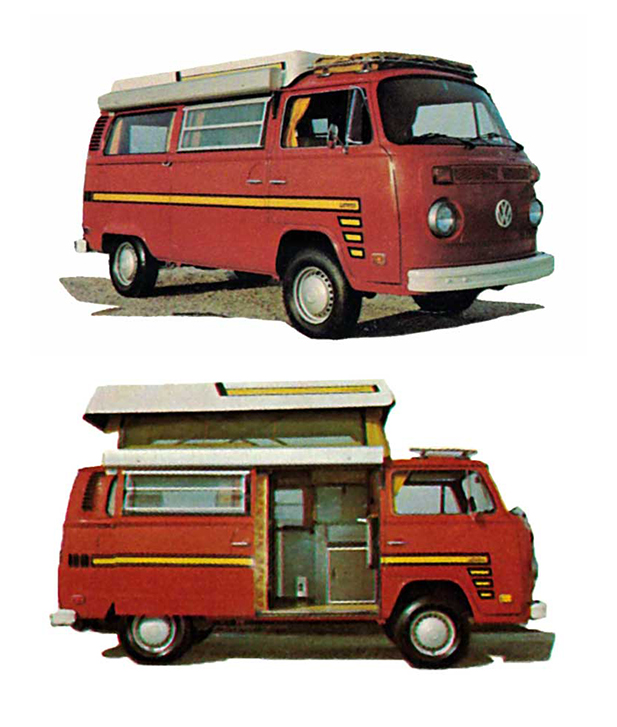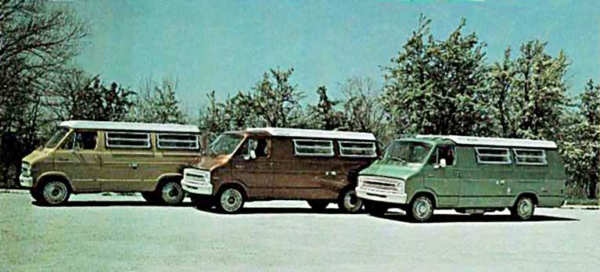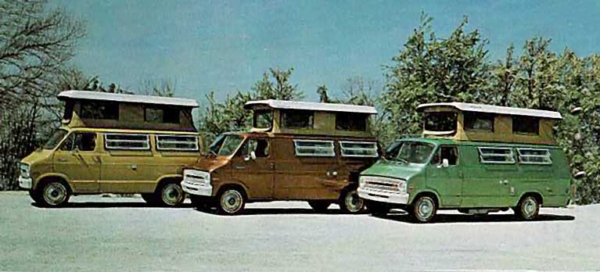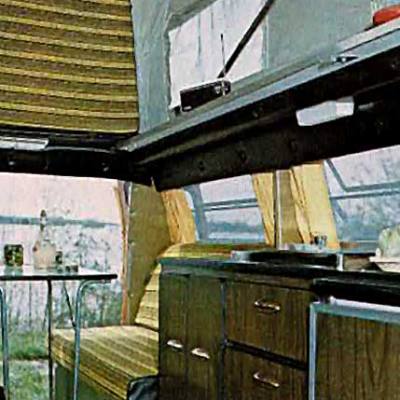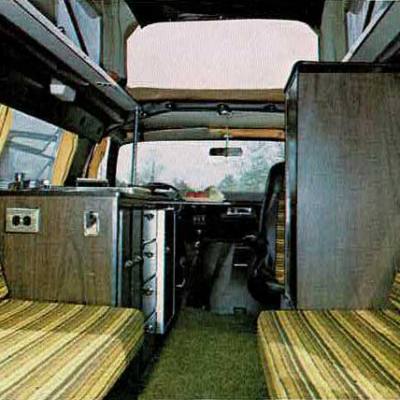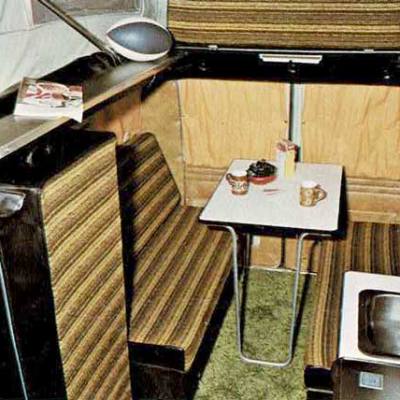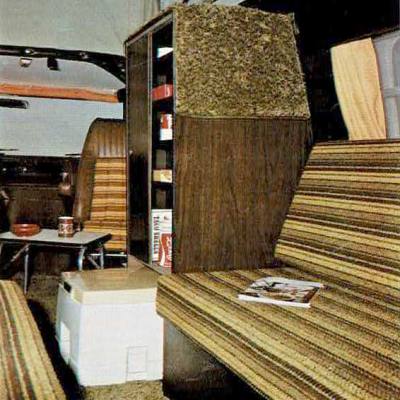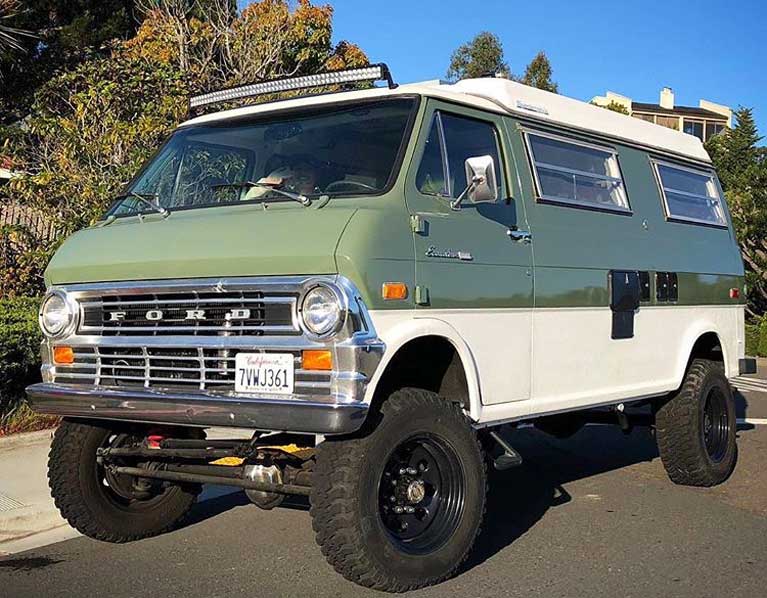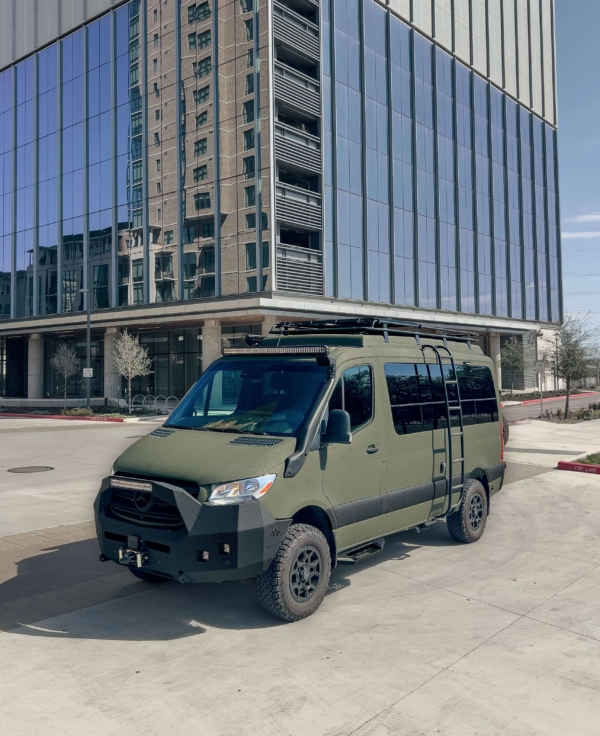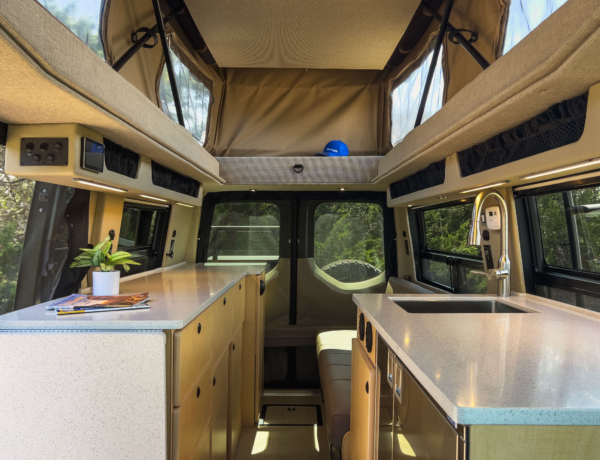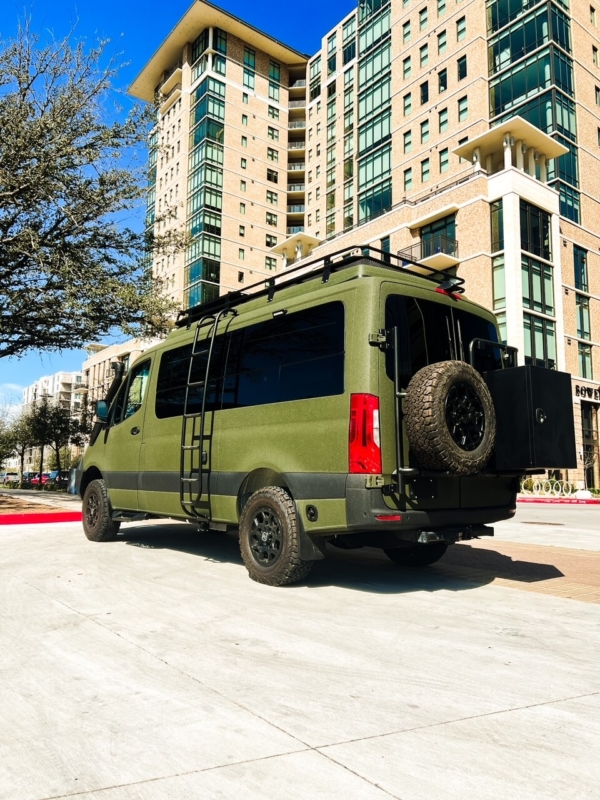Our original plant in El Paso, Texas.
The 60’s
1961 VW
Our first van conversions were state-of-the-art at the time, but very basic compared with today’s. Not much changed until the 70s.
1961 Ford and Chevy
The van’s engine was located between the cab seats. They were underpowered, noisy, and the ride was a little rough. A/C? Open the windows!
Life was simple back then.
To raise our first top you climbed up the rear ladder and crawled in through the rear while pushing the top up. To lower – reverse the procedure.
The interiors were functional and attractively furnished. As stated above they were quite basic. The icebox required a block of ice. The toilet was a bucket with a seat. Freshwater was in a 5-gallon jerry can. Etc.
There were no federal safety standards or RVIA codes for electrical, plumbing, and propane. Seat belts, airbags? Not till a couple of decades later.
Dodge • Ford • Chevy
Camper unit transforms the Ford Econoline into a home-on-wheels that’s especially comfortable. Dining area converts to a double bed, and with a 60-inch bed over the engine cover. With sleeping accommodations for two adults and two children. Optional cabana tent provides additional camping room. Interiors attractively finished in birch paneling, red or turquoise upholstering, plus matching curtain materials.
Standard Features
- 3-in. Polyfoam cushions, red or turquoise vinyl upholstered
- 15-gal. water tank – Gravity faucet
- Ample storage for housekeeping needs
- 50-lb. icebox
- Decorative wall lamp two dome light fixtures
- Table with Armstrong Carlon top
- Any other features? Nope.
- Life was simple back then.
Optional Features
- Luggage rack, sun deck, ladder
- Cabana tent (colorful candy-strip pattern)
- Padded seat rest, converts to extra bed
- Carlon chemical toilet
- Adjustable flame LP gas stove
- Sling Bed for cab
- Awning-type windows for rear doors.
The ’68 Ford Super Econoline was quite an improvement over the early model. Our first full size top utilized the van’s metal roof with fiberglass panels. To raise you pushed up the spring
loaded front and then the rear. It was a little cumbersome.
Evening camp fires, thundering seashores, towering mountains, autumn leaves, winter snows, secluded deserts …
Sportsmobile excels in space organization with a practical layout for food prep, dining, sleeping, and living. Enjoy ample counter space and storage. The comfortable double bed offers 4″ of elbow room and is easily made up with one backrest cushion. Large louvered windows provide gentle breezes, and the bed can stay made during travel.
The 70’s
Our first pop-top that raised and lowered from inside the van. It provided more space, ventilation, and visibility. Plus you didn’t have to bend over to put your pants on.
The interiors were more comfortable with a lot more features and options in the 70s. An example, the ice-box was replaced with a refrigerator.
Later we developed our “Penthouse” top. Others had elevating tops but ours was the first full roof size with a mattress bed in place of a hammock. Plus we engineered our dual u-tube, spring loaded, raise/lower from one position, patented elevating system making it easy to raise and lower the top manually. Later we added power – just push a button!
Much More Than a Conventional Automobile!
The Clubcar was a special model built for VW distributors. It was designed more as an alternative for family use with some camping capability — in place of a car. The rear seat was exceptionally comfortable with a lounge position. That would convert into a bed. A large moonroof was in the ceiling.
Beautiful, soft, luxurious comfort!
Wow! This was quite a departure from our more conservative approach to styling. This wild thing was first popularized in California. We decided to develop our own version with lots of fake fur and shag carpet to see what the market might bring. To our surprise – we couldn’t build them fast enough. However, after a few years sales steadily declined. So we quit.
Town & Country Pleasure Wagons
This conversion plan was one of our most popular in the 70’s.
Favorite colors were avocado green and harvest gold.
Short shag carpet and dark walnut cabinets were also first choices.
Plaid upholstery later took over.
4×4 conversions
Available for the Ford Econoline vans in the earlier 70’s (1971 Ford in photo). Sportsmobile first used the Pathfinder 4×4 conversions for years. They were tough and rode rough.To engage the 4×4 you had to get out and lock the hubs. Today’s 4×4 have an electrical system that selectively brakes individual wheels for increased traction and stability. Plus many other improvements. Including a nice ride similar to a regular van.
Currently – Our conversions seamlessly integrate the finest options from both the RV industry and the overland market. Our commitment to customization means we can tailor every detail to your exact specifications, ensuring a personalized and unparalleled experience that perfectly aligns with your unique preferences and requirements. Your vision guides us, and we bring it to life with precision and expertise, creating a mobile haven that is as distinctive as your individual style and adventures.
As fast as technology is moving — who knows what vans and conversions will evolve into.
